Note to self: Maybe a bit more turn-out next time ….
Well, honestly, it wasn’t too unexpected, Forrest’s enthusiastic leaps on the longe during his first introduction to canter. I had turned him out in his paddock, following breakfast, for his usual couple of hours, however, normally, he then rotates out into the big field for three hours following that. But today, I needed to fit his session in during this day of lessons, so I brought our young man down to the arena on this fairly breezy late morning to begin.
As usual, we warmed up walking around the entire arena, both directions, then I asked him for a good, forward, and rhythmic trot, also in both directions.
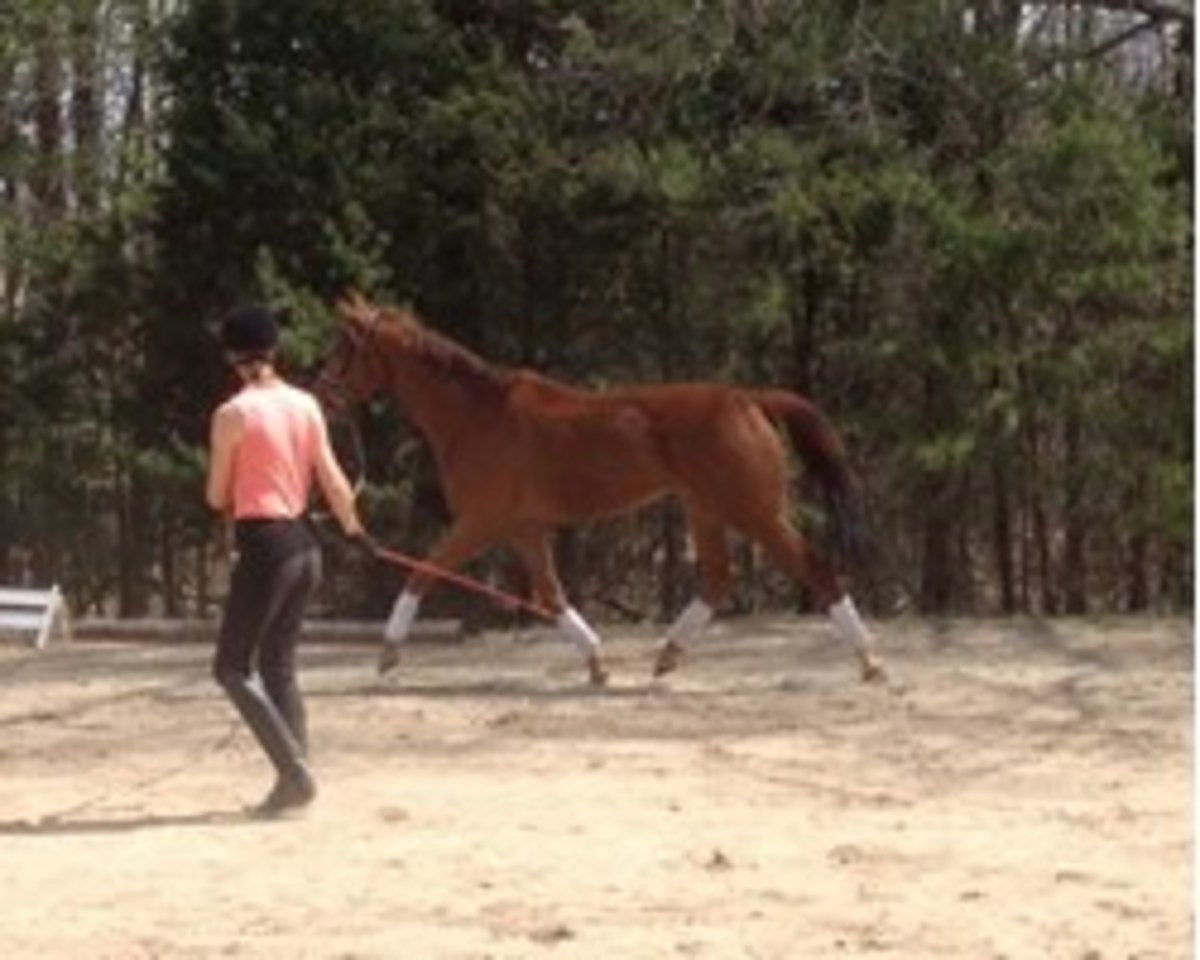
After a walk break, I made the mistake of asking him to canter to the left, first, thinking as he always galloped to the left, this would be easier for him to find his lead, but of course, with only my longe whip to assist me in attempting to keep his shoulders in line, I wasn’t successful in stopping him from, after a half circle, dropping
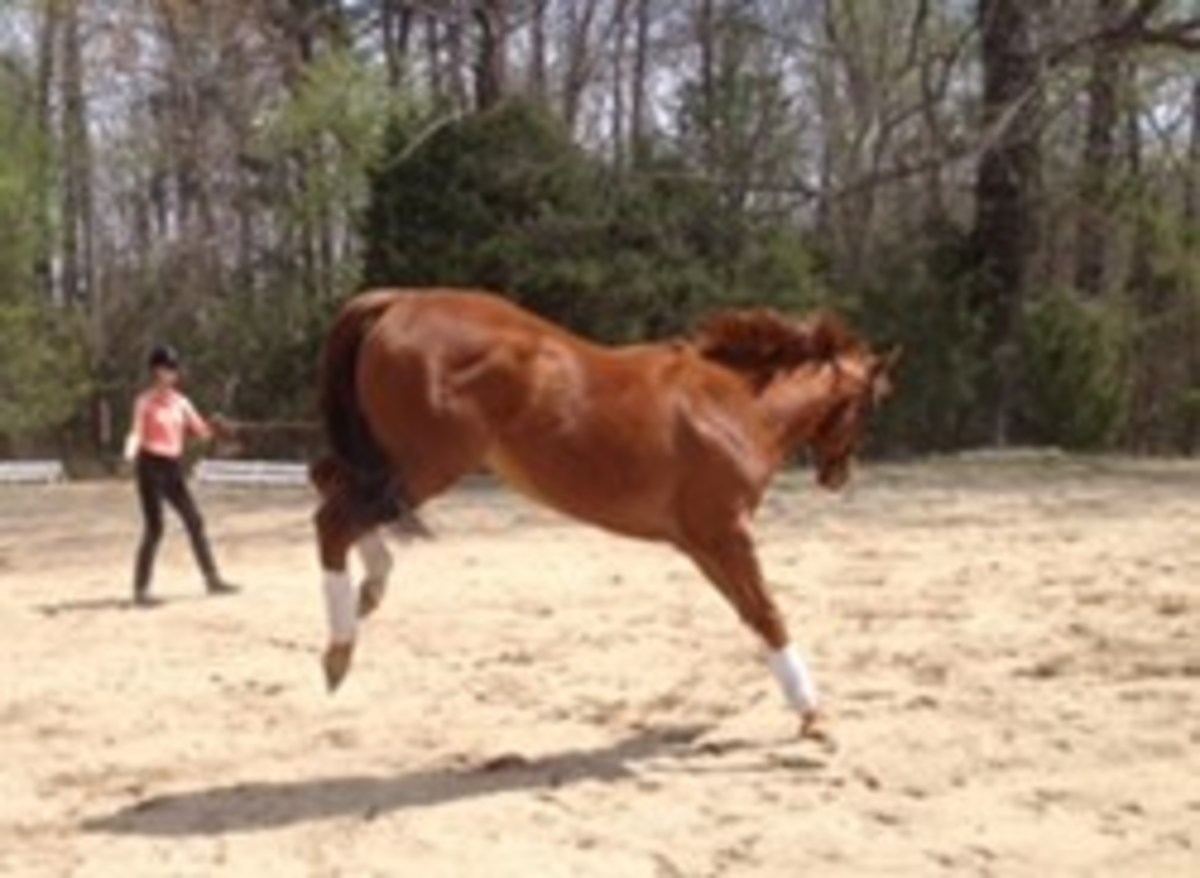
When a horse takes off and launches a couple of explosions, the last thing I want to do, with those fragile legs, is jerk him up abruptly. I find the best thing to do is feed them as much line as possible, so I can get well behind them and have a much better opportunity to pull them around in a bigger circle, then spiral them in slowly, with his verbal cues of the obligatory, dressage, ‘bird trills,’ that he knows very well mean, “Chill out, everything’s fine,” along with “ho, ho, hooooo.” Once standing and reassured, I send Forrest back out on the longe to walk, catch his breath and relax. From there, we go back to trot, to the right, this time, as his left leaning shoulder will keep him leaning towards the outside of the line, and I wait until we have a thoroughly relaxed, yet still forward, trot. Just as if I were riding, I’m not going to allow him to charge around, unbalanced, and tense, at the trot, anticipating the canter, and end up with a rushed, tense, canter depart. If he becomes tense, I’ll simply throw in a few trot/walk transitions- but Forrest finds his comfort zone after a few revolutions.
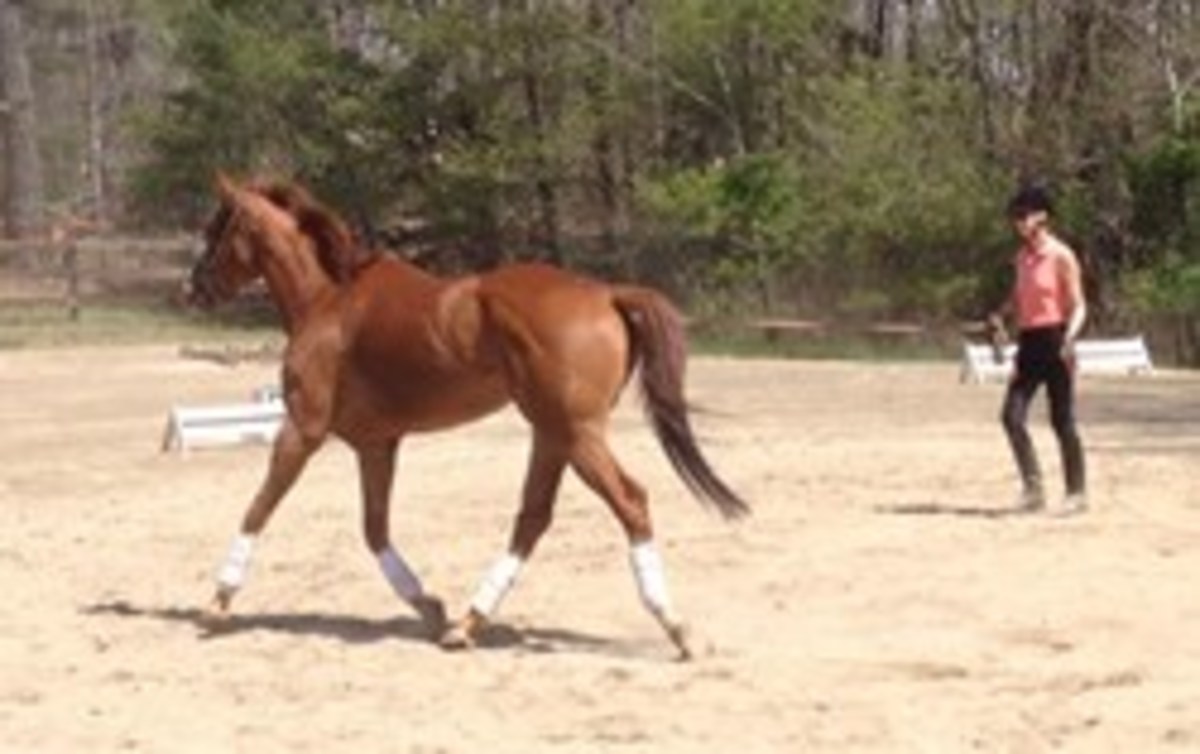
This canter depart has far less drama and I’m able to feed him enough line for a 20 meter circle and he is very obedient, with no difficulty picking up the right lead.
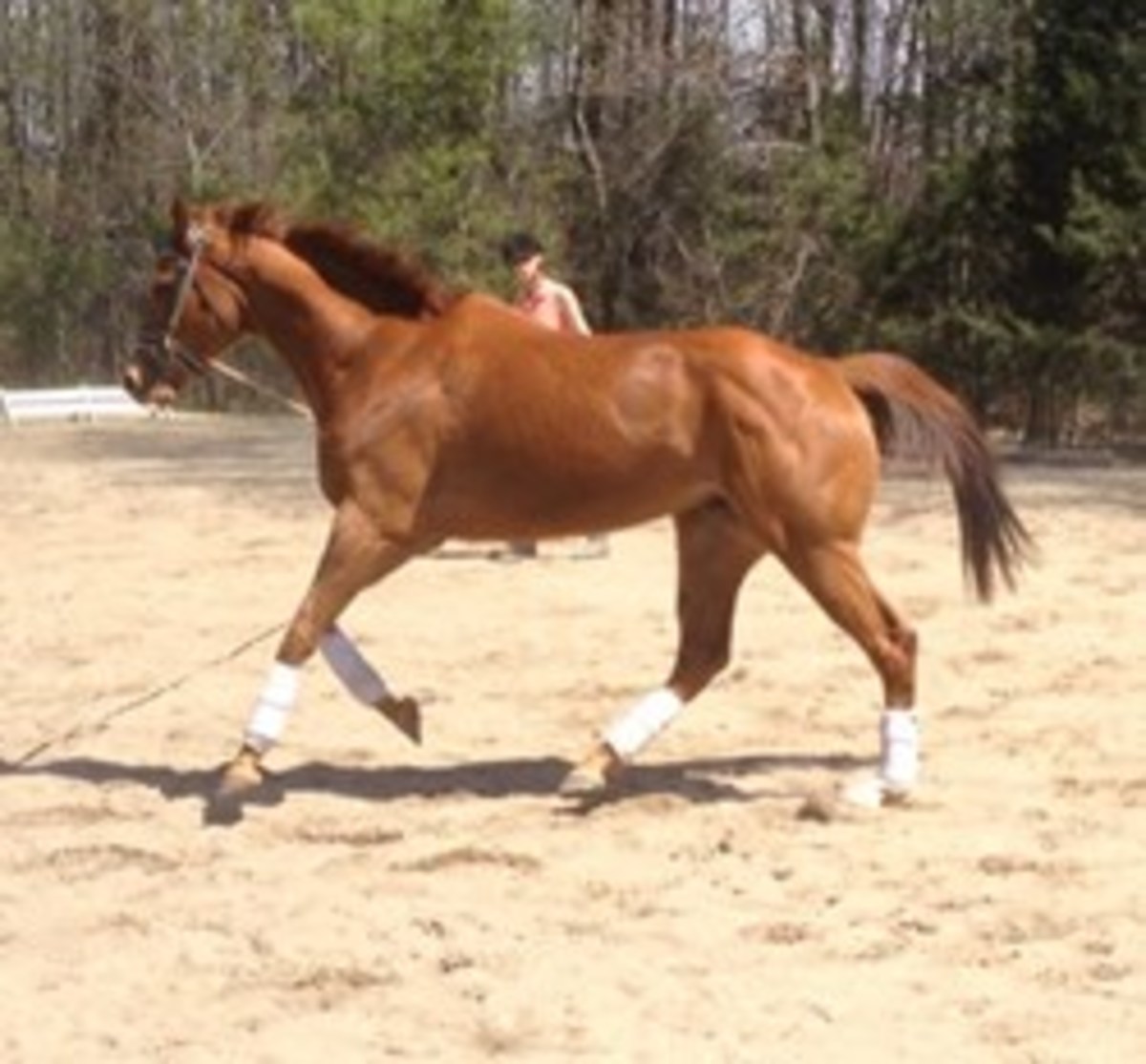
After a lot of praise and a walk break, we return to the left, pick up our left trot, and when it is a quality trot (because he is anticipating a little), we try the left canter again. He steps right into it, gives another buck, but settles immediately afterwards and canters steadily around with a nice rhythm and quite a bit of natural balance.
I am quick to praise him, quick to end the session, now, as it has gone on longer than I intended, and I give my boy lavish praise and his accustomed cookies for a job well done.
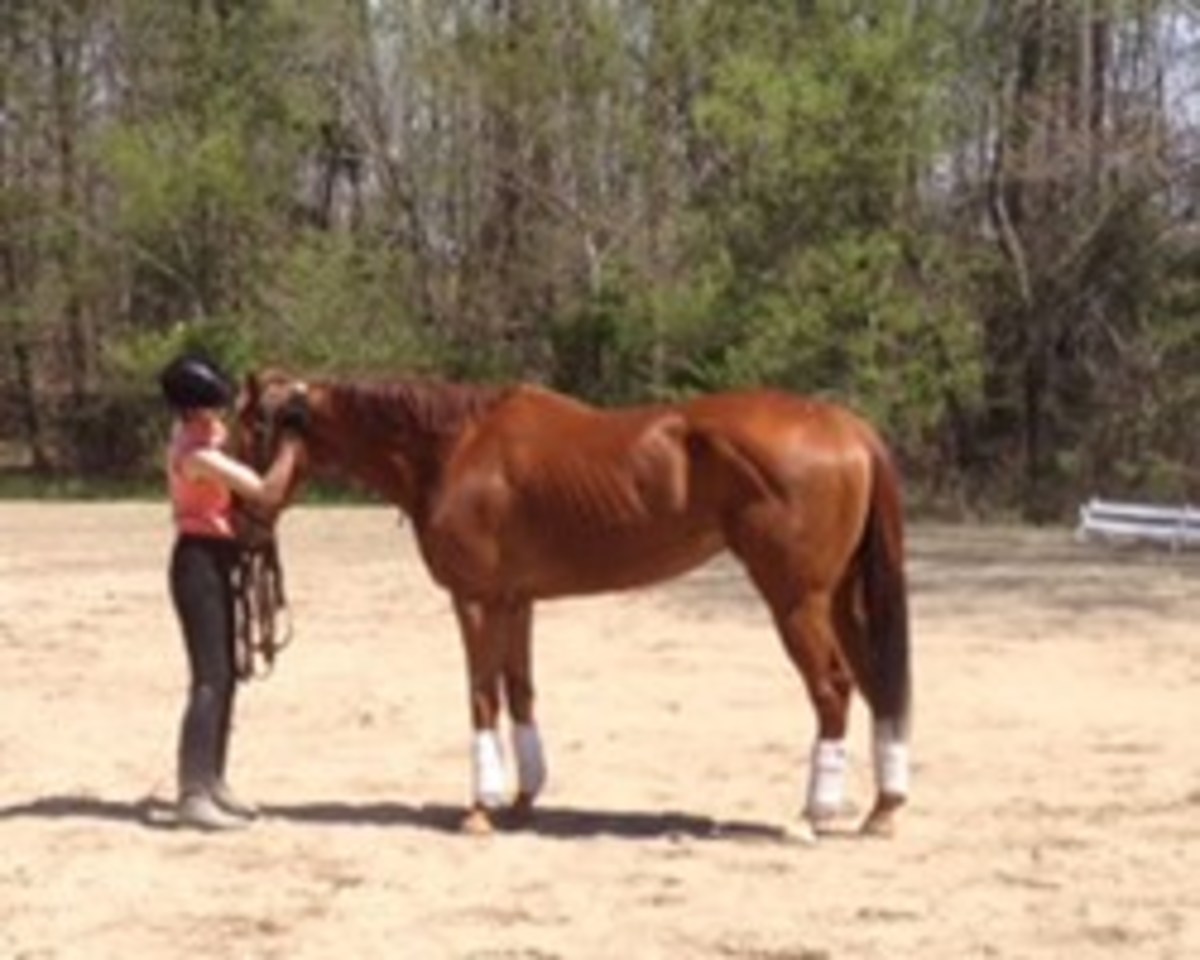
Knowing that I’m not going to have the ability to really keep him balanced at the canter with just my whip to point at him, it’s time to give him some assistance. Next week, I will introduce either side reins or the double longe. I favor the double longe for its unrestrictive approach, allowing freedom in the horse’s shoulders, but Forrest is a sensitive fellow and I will simply have to see if he can handle a line running down the other side of his body. Whatever he is more comfortable with is the way we will go.











